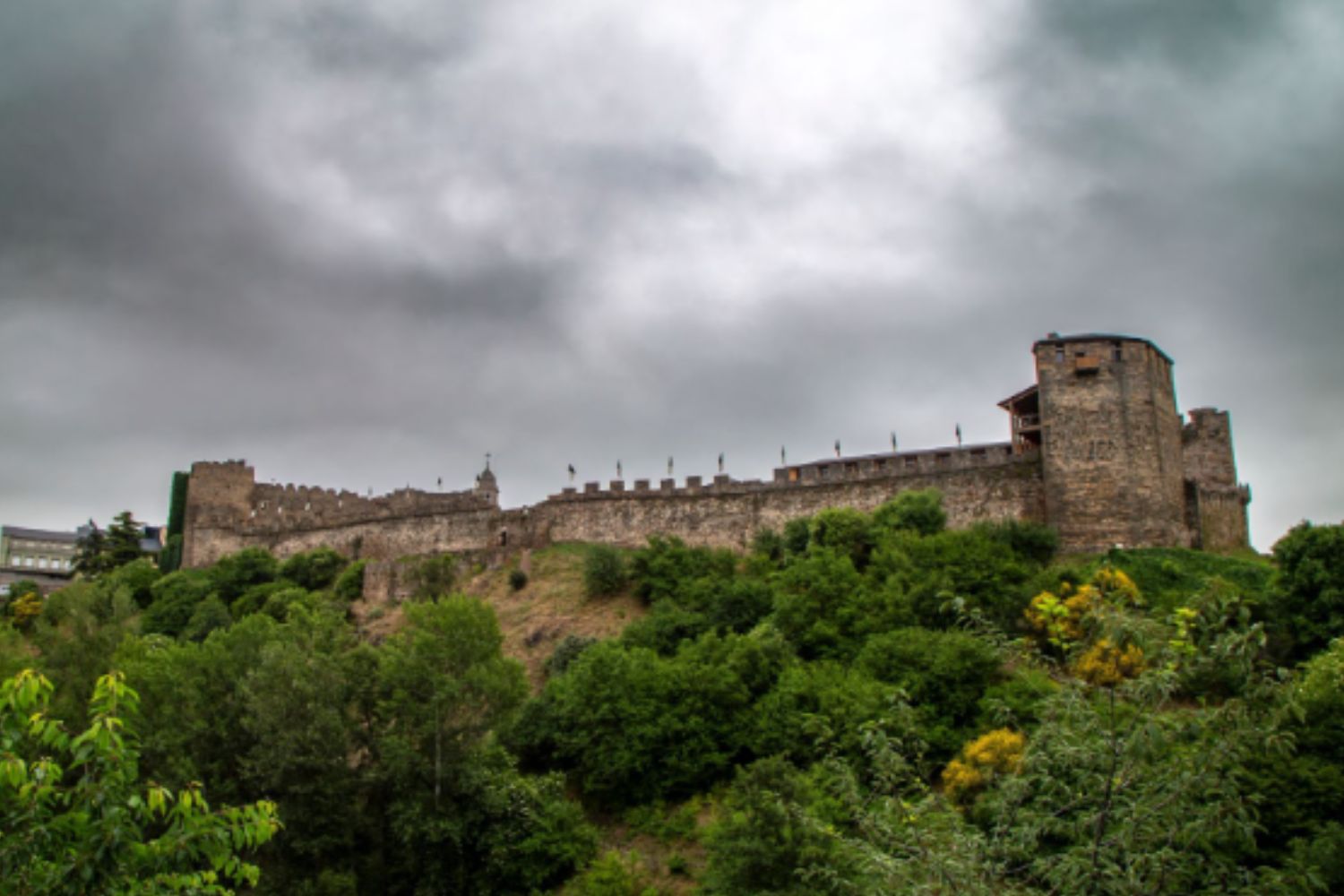Hotel Ponferrada Plaza
Mysteries and legends of Ponferrada: a journey through the Bierzo’s hidden history

Ponferrada is far more than just the capital of the Bierzo region and a gateway to the Camino de Santiago. Beneath the golden light that settles over its rooftops and along its cobbled streets, the city hides a wealth of mysteries and legends that turn any stroll into a journey back in time.
Exploring its most enigmatic side means delving into tales of Templars, hidden Virgins, secret passageways, werewolves, and historic events that shaped the city.
The Templar Castle: the heart of the legends
Every tour of Ponferrada’s mysteries begins at its Templar Castle, one of Spain’s most spectacular medieval fortresses and the city’s enduring symbol. Its mere presence, standing guard over the Sil River, evokes tales of knights and lost relics.
According to legend, the Holy Grail was once hidden within its walls after being brought here from the Holy Land by the Templars. During the annual Templar Night, Ponferrada relives this tradition with a parade of knights carrying replicas of the Grail and the Ark of the Covenant, bringing the legend to life.
But the castle’s secrets go far beyond religious myths. Among the most intriguing are:
- La Cueva la Mora: a passageway linking the fortress to the Sil River, said to have been inhabited by a Moorish woman guarding hidden treasure.
- The tunnel to Cornatel: local lore claims the Templars built a 10-kilometre underground corridor to Cornatel Castle, providing a secure escape route or a way to transport sacred relics.
- The curse of Fernando IV, known as El Emplazado, whose mysterious death was said to fulfil the prophecy of two brothers unjustly executed.
Every stone of the castle is a reminder of how history and legend intertwine, fuelling visitors’ imagination.
The Virgin of La Encina: the “Morenica” found in an oak tree
From the castle, the route leads to Plaza de la Encina, presided over by the basilica of the same name and a statue of a Templar knight. This is the setting for one of the city’s most beloved tales: the appearance of the Virgin of La Encina, Ponferrada’s patron saint.
Tradition holds that, while the Templars were cutting timber for the fortress, they discovered a long-lost statue of the Virgin hidden in the trunk of an oak tree. Since then, La Morenica, one of Spain’s few Black Madonnas, has been a symbol of Ponferrada.
The history of this square doesn’t end there. The basilica’s origins as the small hermitage of Santa María, along with the dramatic collapse of its bell tower after a lightning strike in the Middle Ages, add even more stories to its walls.
Plaza de San Lorenzo: stories of war and memory
The next stop is Plaza de San Lorenzo, also known as Plaza de los Culos due to its whimsical sculptures of swimmers that surprise passers-by. Here, the stories turn to the Spanish Civil War:
- The memory of Jerónima Blanco and her son Fernando, symbols of resistance and the suffering of those years.
- The presence of maquis guerrillas in the Bierzo mountains, which became a refuge for fighters.
- The failed assassination attempt on Franco during his visit to inaugurate the Compostilla power plant.
This square shows that Ponferrada’s mysteries are not only medieval—they also echo through more recent, moving chapters of history.
Behind the walls of the Bierzo Museum: between prisons and werewolves
The journey continues through a maze of narrow streets, eventually reaching the Bierzo Museum, one of the city’s most fascinating buildings. Originally the Palace of the Counts of Toreno, it became a prison in the 16th century and remained so until 1968.
Its walls hold stories that send shivers down the spine:
- Accounts of Francoist repression and the last days of those who passed through its cells.
- The legend of Romasanta, Spain’s first documented werewolf, whose crimes terrified Galicia and the Bierzo.
- The curious anecdote of Luis Boya, the local barber, who as a child cut prisoners’ hair and later helped restorers recreate the prison’s interior layout from memory.
Few visits allow you to feel history as closely as within this museum.
The Town Hall Square and the mystery of the Golden Fleece
The final stop is Town Hall Square, entered through the iconic Clock Arch. The façade of the City Hall bears a curious detail often overlooked: its coat of arms is crowned with the Order of the Golden Fleece, a royal symbol traditionally displayed only after a king’s visit.
The enigma lies in the fact that there is no record of Ponferrada ever receiving such a royal visit at the time the building was erected. This peculiarity has sparked theories linking the emblem to Freemasonry or even the Illuminati, adding a contemporary touch of intrigue to the city.
Experience the mysteries of Ponferrada with all your senses
Ponferrada invites you to lose yourself in its legends, to be captivated by stories that bridge the medieval and the modern, and to end the day with a glass of D.O. Bierzo wine as you reflect on the secrets you’ve uncovered.
And to complete the experience, nothing beats a comfortable, restorative stay. Book your room at Hotel Ponferrada Plaza and enjoy the magic of the city, just steps from its most enigmatic corners.

